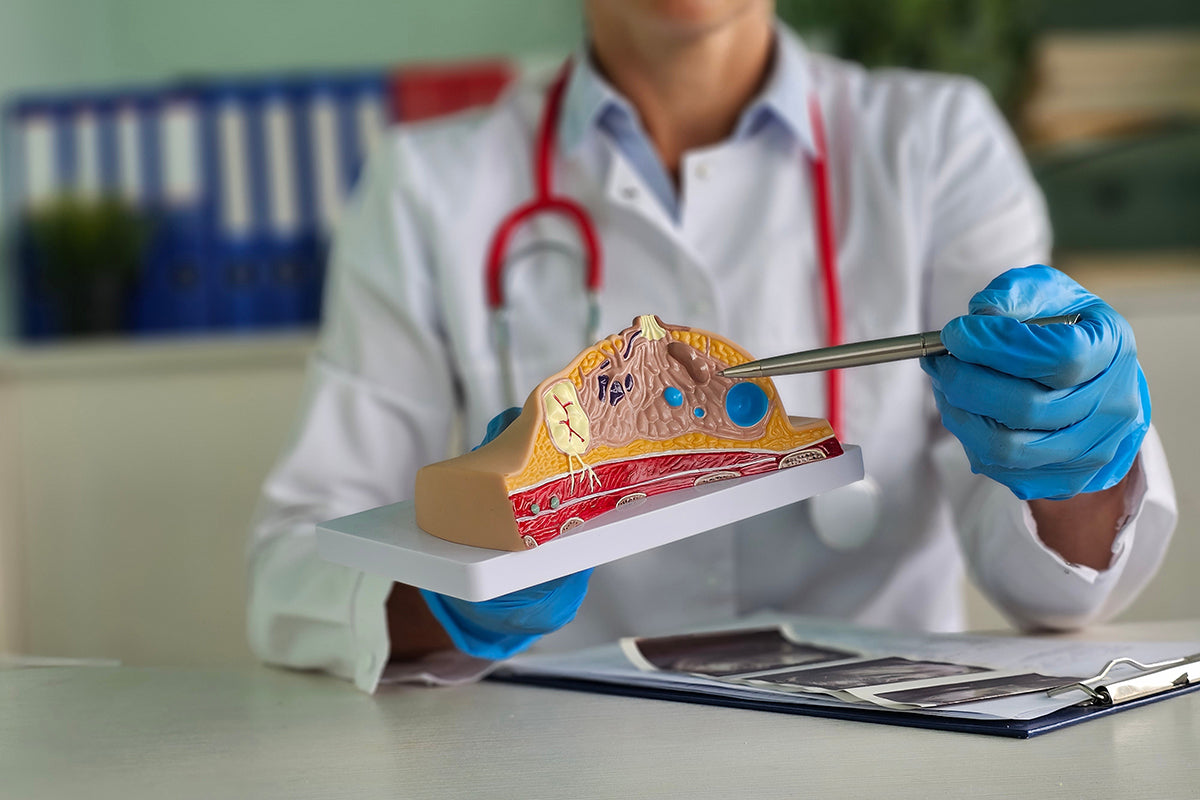
Breast cancer: when breast's cells grow out of control
|
|
Time to read 4 min
|
|
Time to read 4 min
Breast cancer begins when cells in the breast grow uncontrollably. These cells typically form a tumor that can often be detected on a mammogram or felt as a lump. The tumor is malignant (cancerous) if the cells can grow (invade) surrounding tissues or spread (metastasize) to distant areas of the body. Breast cancer occurs almost exclusively in women, but it can also develop in men, though less frequently.
Breast cancer can originate in different parts of the breast. Most breast cancers start in the ducts that carry milk to the nipple (ductal cancers), some in the glands that produce breast milk (lobular cancers), and a small number in other breast tissues.
Breast cancer is classified into two main types based on the appearance of the cancer cells under a microscope:
In some cases, a single breast tumor can be a combination of different types or a mix of invasive and in situ cancer. In rarer types of breast cancer, cancer cells may not form a tumor.
Breast cancer can also be classified based on proteins found in the cancer cells, into groups such as hormone receptor-positive or triple-negative.
Various factors can increase the risk of breast cancer. Some risk factors can be managed, such as quitting smoking, while others, like family history, cannot be controlled.
Risk factors for breast cancer include:
While most breast cancers develop a lump or mass in the breast (typically a painless, hard mass with irregular edges), this is not always the case. Other signs of breast cancer to watch for include:
In some cases, breast cancer can spread to lymph nodes under the arm or around the collarbone, causing a lump or swelling even before the original tumor in the breast tissue is large enough to be detected. Swollen lymph nodes should also be reported to a doctor.
Breast cancer is now a very common disease among women aged 30 to 50. For this type of cancer, the 5-year survival rate for women with stage 0 or stage I breast cancer is close to 100%, and approximately 93% for stage II. For stage III, the 5-year survival rate is around 72%, making it less deadly than other cancers at this stage of development. However, breast cancers that have already spread to other parts of the body are more challenging to treat and tend to have a poorer prognosis. Metastatic or stage IV breast cancers have a 5-year survival rate of approximately 22%. Nonetheless, there are often many treatment options available for women with this stage of breast cancer.
IMPORTANT: EARLY CANCER DIAGNOSIS IS CRUCIAL BECAUSE A CANCER DETECTED AT AN EARLY STAGE — BEFORE IT HAS GROWN SIGNIFICANTLY OR SPREAD TO OTHER PARTS OF THE BODY — IS MORE LIKELY TO BE SUCCESSFULLY TREATED. IN CONTRAST, IF THE CANCER HAS SPREAD TO OTHER ORGANS, TREATMENT BECOMES MORE DIFFICULT, AND THE CHANCE OF SURVIVAL IS MUCH LOWER.
Doctors have a wide range of techniques available for detecting breast cancer. These include breast exams, imaging procedures such as mammography or magnetic resonance imaging (MRI), and biopsies. However, these procedures have some limitations. First, the low efficacy of manual breast exams; second, the need for a certain size for any lump or mass to be detected by imaging procedures (as well as the high cost of these procedures); and finally, the stress and invasiveness associated with obtaining a biopsy.
Breast cancer begins when cells in the breast begin to grow out of control.
Sometimes a breast cancer can spread to the lymph nodes under the arm or around the collarbone and cause a lump or swelling there, even before the original tumor in the breast tissue is large enough to be detected. Swollen lymph nodes should also be reported to the doctor.
Nowadays, breast cancer has become a very common disease in women between 30 and 50 years of age. In the case of this type of cancer, the 5-year survival rate for women with stage 0 or stage I breast cancer is close to 100% and around 93% for those with stage II.